OCCULT PRACTICES?
Potash Kalium Connection
I wonder if my neighbors suspect that I’m engaging in some sort of occult ritual as I take rounds through the farmden followed by puffs of grey smoke. Perhaps I’m entreating tiny gnomes living within the soil to keep weeds at bay next season? Or begging garden gremlins to make my soil fertile? No, and again no! I’m merely spreading wood ashes.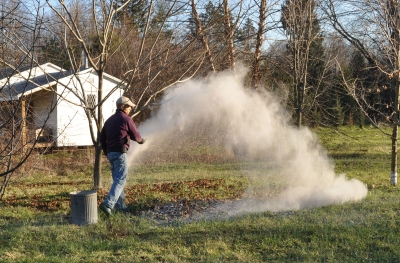
I must be careful with my terminology: I’m not dumping wood ashes; I’m fertilizing my soil with wood ashes. Wood ash is a rich source of potassium, a nutrient required by plants in amounts second only to nitrogen. Potassium helps build strong stems and helps plants resist disease. It also regulates the opening and closing of stomata, the tiny pores in leaves through which gases pass for photosynthesis.
The close connection between potassium and wood ash is reflected in a traditional source of, and the root of the word, potassium — “potash.” Potassium compounds once were extracted by mixing wood ashes with water in iron pots. Go to a nursery and ask for a potash fertilizer, and you’ll be handed a bag of potassium sulfate (sulfate of potash), potassium chloride (muriate of potash), greensand (a mined mineral), or — if the time was a century ago — wood ash.
“Potash” technically means potassium oxide, but sometimes also refers to potassium carbonate or hydroxide, which potassium oxide, being unstable, becomes upon exposure to air and water. Here’s how that happens (K is symbol for potassium, from the Latin word (kalium):
K2O + CO2 —> K2CO3
K2O + H2O —> 2KOH
That’s one thing I love about chemistry; if you get the equation right, the numbers of elements add up on each side of the arrows.
Wood ash contains from one to about ten percent potash. (Since “potash” includes the weight of potassium and oxygen, the actual potassium concentration is always less than the stated potash concentration; seventeen percent less, to be precise.) Ashes from hardwood trees are at the top of this range, and softwood ashes are at the low end.
I always store my ashes in a metal can under cover of the garage, because rain will leach nutrients from ashes.
Elixir or Snake Oil
I’m not overly precise in spreading of these ashes. I start at one end of the farmden in the beginning of the wood heating season, then work my way across the land, aiming to spread five to ten pounds of ashes over every hundred square feet.
The vegetable beds usually don’t get any ashes. The inch of compost that I lay on those beds every year provides more than enough potassium (and phosphorus).
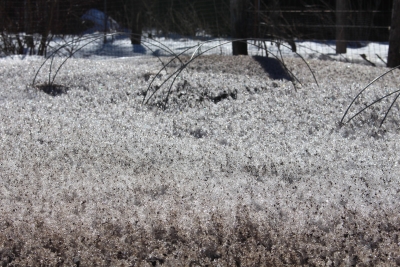
Wood ash on snow creates interesting surface
Wood ash is good stuff, but is not to be overused. Plants need adequate, not excessive, potassium. Too much potassium could upset the balance of other nutrients in a plant. (High potassium levels in my vegetable beds have not upset nutrient balances there. A possible explanation is that all that compost, bringing soil organic matter levels to 15%, provides a different testing environment than the generally much lower organic matter environment for which the tests have been derived.)
Wood ashes also make the soil more alkaline, so I never use them on my blueberry or rhododendron bushes, nor should wood ashes be used on azaleas, pin oaks, mountain laurels or other plants that enjoy very acidic soils.
By the way, coal ashes contain toxins, so should never be spread on the ground.
Not Just for Spreading
I don’t dump — whoops, I mean spread — all my wood ashes on the garden and lawn. I also save some for use in potting soils, mixed in at the rate of 2 cups of ashes per five gallons of mix, except in potting mixes destined for acid-loving plants, of course.
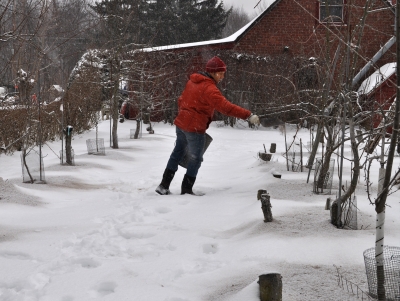
Wood ash speeds melting of snow, which keeps voles away from fruit trees
And some I sift, then save, to use in the garden during the summer for pest control. Plants sprinkled with dry ashes become unpalatable to rabbits, bean beetles, and onion and cabbage maggots. A thick line of dry ashes on the soil becomes a Maginot Line against slugs, until washed away by rain.
Conversely, rain can wash into the soil the alkalinity from wood ashes spread over the ground to kill cutworms. Cucumber beetles are said to be repelled (or killed?) by a handful each of wood ash and hydrated lime, calcium hydroxide, mixed into two gallons of water, then sprayed on the leaves. Squash bugs are allegedly repelled by a sprinkling of wood ashes into which has been mixed turpentine, at the rate of one tablespoon turpentine per gallon of wood ash. And a paste of wood ashes and water on the trunk of a peach tree is supposed to keep borers at bay.
In my garden, cabbages rarely get maggots and I rarely see slugs or their handiwork, so I can’t personally vouch for all these pest-deterring and killing properties of wood ashes. But wood ashes are nontoxic and the above suggestions come from reputable sources, so the treatments are worth a try when needed. The main drawback to using wood ashes for pest control is that they usually must be applied again following rain. Also, keep wood ashes off tender seedlings, or they might be “burned.”
Perhaps there is some sort of gnome or gremlin in these ashes that impart them with such a myriad of uses.

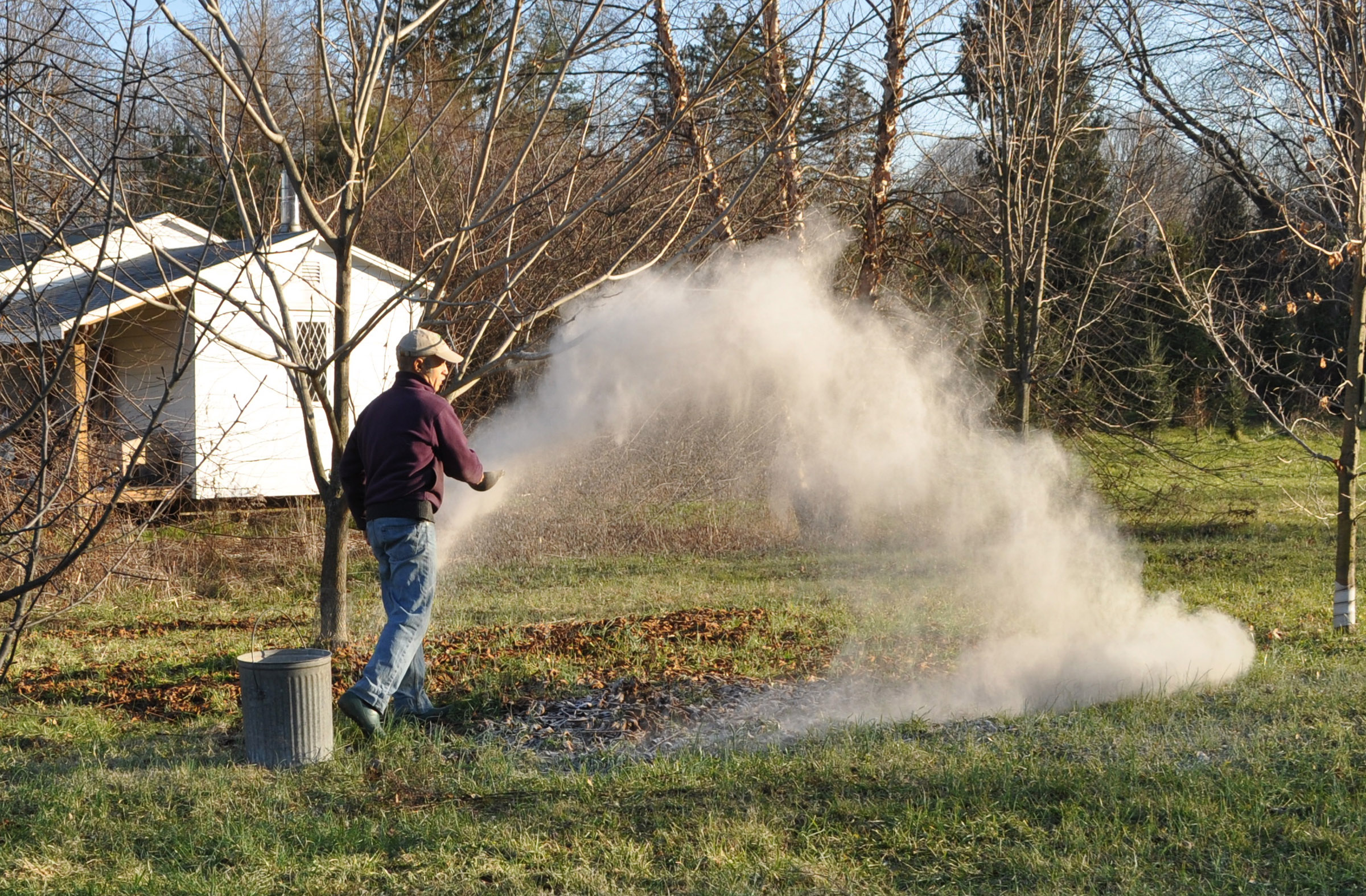
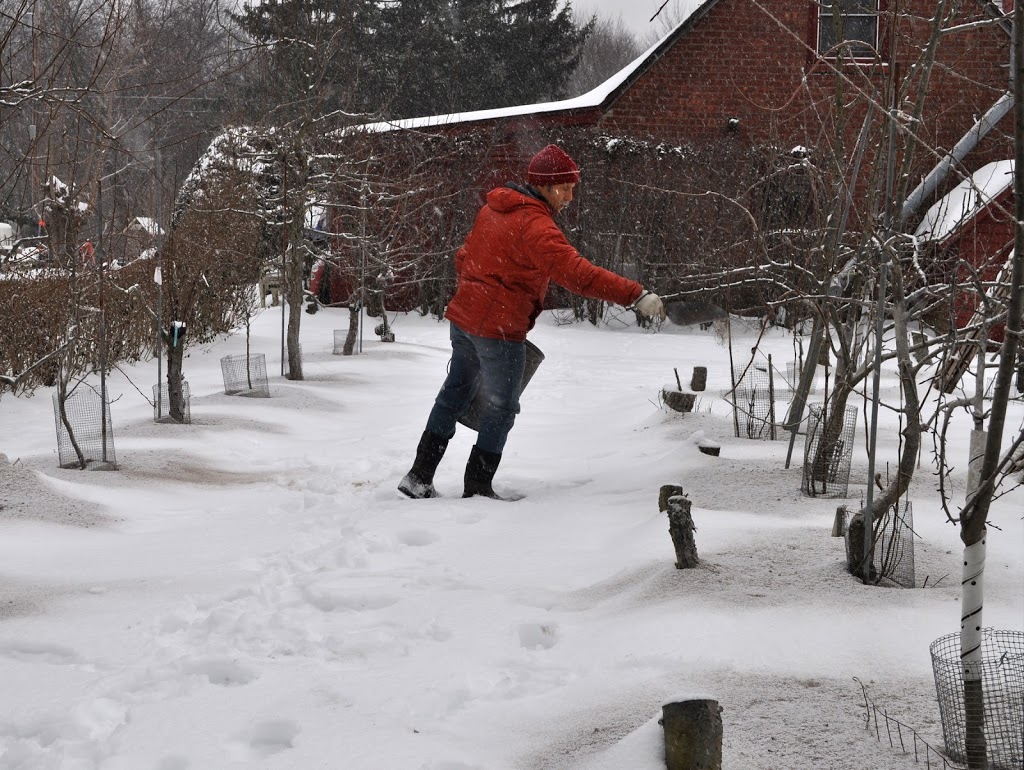

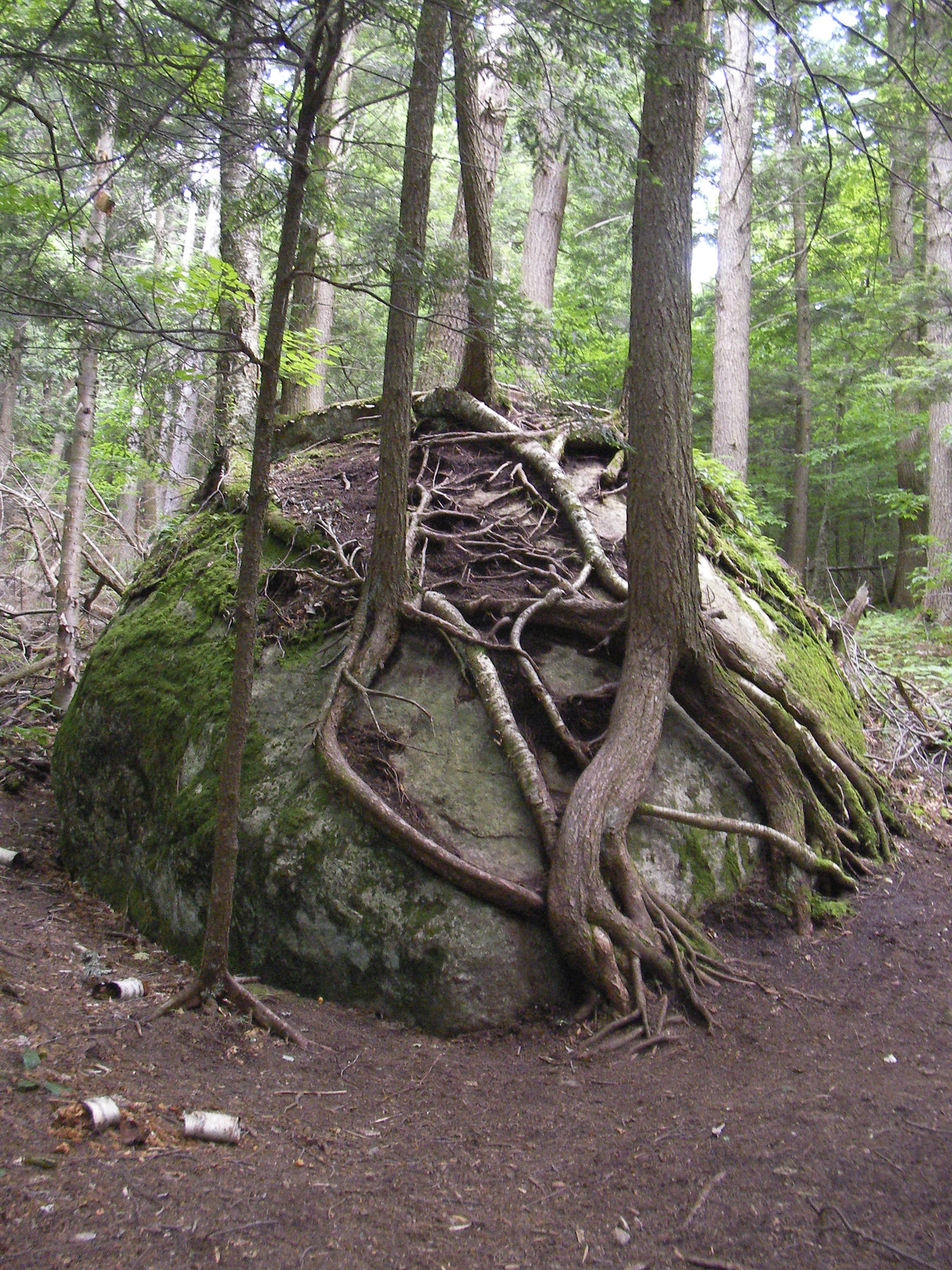
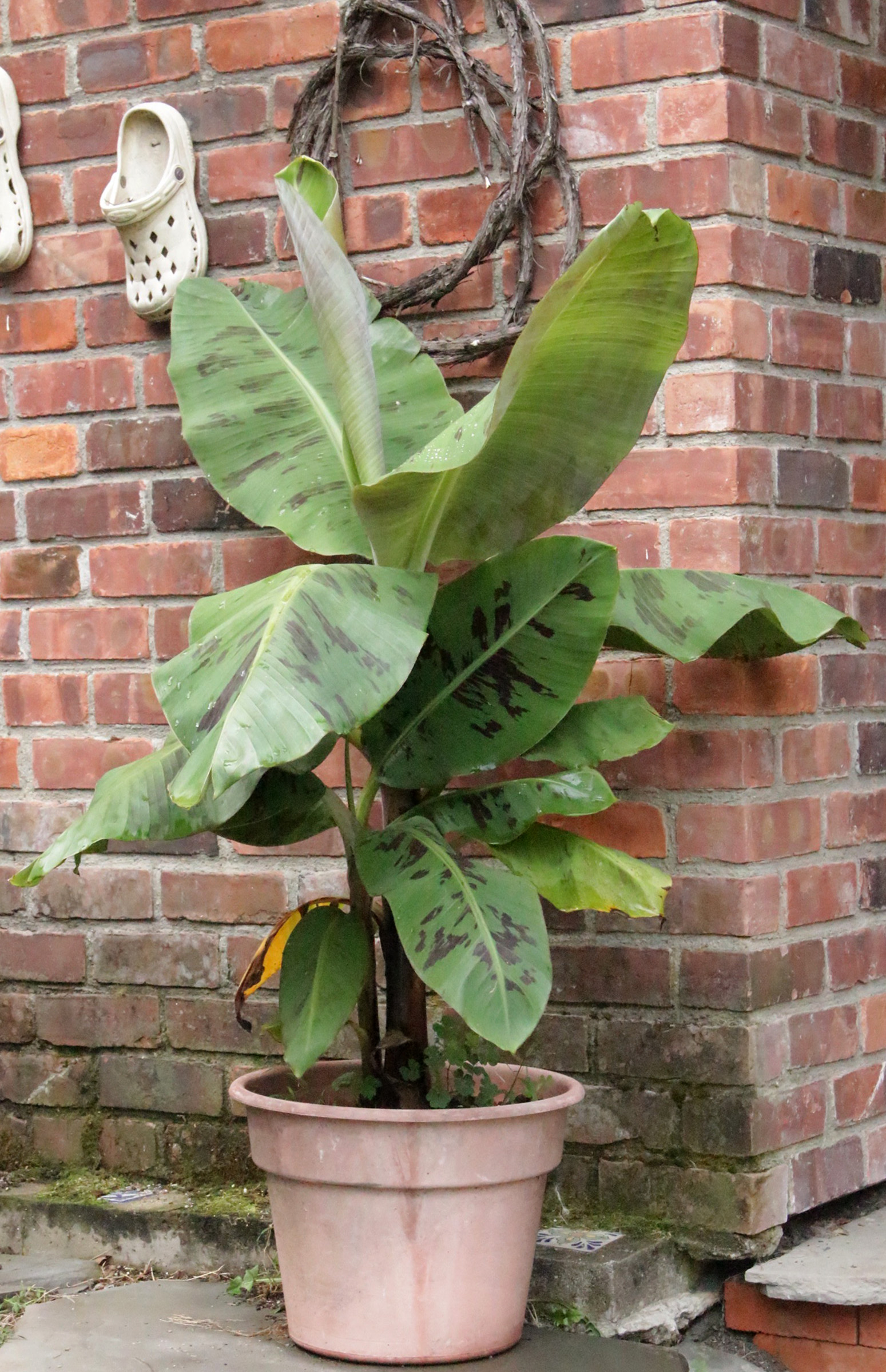
Love some good stoichiometry. Thanks for the blog posts Lee. They are always educational.
We burn birch, hemlock, and spruce so are in the medium to softwood rating on potash. Like you, I gently ‘dust’ our acreage throughout the winter. It seems to benefit our naturally acidic soil.
That makes sense.
Thanks Lee for the pest control tricks using wood ashes. Wood ash is very alkaline so do you frequently soil test the PH Level. BTW, I just got your book – the EverCurious Gardener and a lot of useful information.
I don’t use that much wood ash — just a sprinkling — or that often so figured the pH level was okay. By chance, I recently did get a soil test back, and the pH is 7. I’d like it a little lower, so I’m going to further lighten up with the wood ash. Thanks for your comment.
I’m glad you like my book.